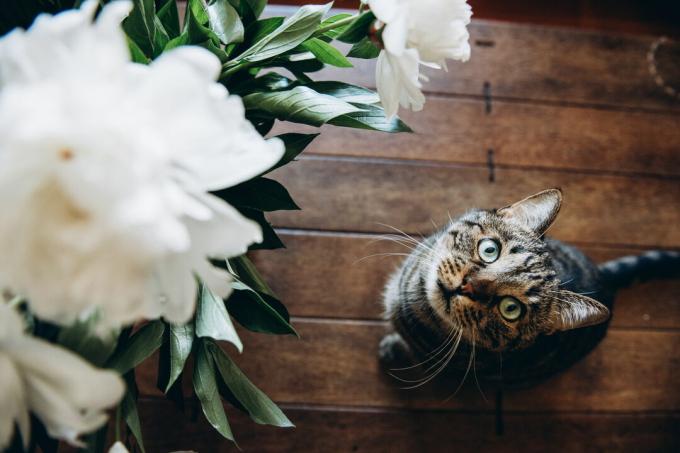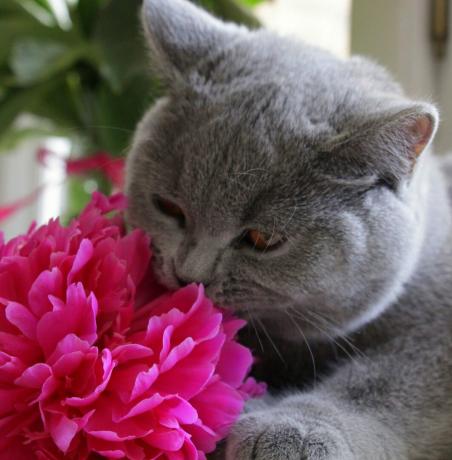In early summer, flowering peonies can be found in many beds. This begs the question: are peonies poisonous to humans and animals?

peonies are an eye-catcher in every garden. They are easy to care for, have wonderful colorful flowers and can get very old. Once these queens of ornamental plants have moved into a garden, they stay there - usually for life. But one hears again and again that they would also contain toxic substances. We have summarized the most important facts about the myth of the poisonous peony for you.
contents
- Peony: Toxic to Humans?
- Peony: Which parts of the plant are poisonous?
- Peony: symptoms of poisoning
- Peony: What to do after eating?
- Peony: Toxic for dogs and cats?
Peony: Toxic to Humans?
The peony has been known as a medicinal plant since ancient times. It is known that its anti-inflammatory effect helps with many diseases. Even today, it is still an ingredient in some medicines. Nevertheless, not all parts of the plant are completely harmless and in general, in memory of the scholar Paracelsus: "The dose makes the poison".
Peony: Which parts of the plant are poisonous?

The flowers and seeds of the peony are classified as slightly poisonous. Paeonin is the name of the active ingredient found in the petals, peregrenin that contained in the seeds of the plant. When it comes to the green leaves and rootstock of the peony, opinion is divided as to whether or not they are harmful to health. To be on the safe side, it's best not to eat any part of the plant.
Peony: symptoms of poisoning
Both of the above substances (paeonin and peregrenin) can, after larger amounts of them on each Parts of the peony plant were ingested, leading to upset stomach and intestines, to the point of vomiting and painful lead to diarrhea. An adult must have eaten a few petals or seeds before such an immune response develops. In small children, depending on their lower body weight, even a smaller amount is sufficient to trigger symptoms of poisoning.

Please note that you are for example. do not expose yourself to any danger when cutting back the peony bushes or cutting the flowers for the vase. Pure skin contact with the plant does not cause a reaction.
Peony: What to do after eating?
As mentioned above, when adults consume small amounts of peony plant parts, nothing happens. However, the following symptoms of poisoning cannot be completely ruled out:
- Strong nausea
- Stomach and intestinal problems
- Vomit
- Violent colic
If these symptoms occur, you should proceed as follows:
- In the case of children, first remove any remaining parts of the plant from their mouths (as a precaution, secure these remains).
- Give the affected person something to drink, preferably water or tea. If the affected person is conscious, shows no other abnormalities in behavior and are circulatory and Breathing normally, it is sufficient for the time being if you contact your family doctor or a poison control center by telephone take up.
- If the person loses consciousness, call 911 immediately.
Peony: Toxic for dogs and cats?
Consuming peony plant parts can also cause symptoms of poisoning in pets. However, they differ somewhat from those of humans.
Symptoms of poisoning in pets:
- The animal appears disoriented and apathetic
- He's salivating
- It moves convulsively

Small rodents such as guinea pigs and hamsters are particularly at risk. But also puppies and young cats should be supervised in the vicinity of the plants. Hardly any cases of poisoning by peony parts are known from older animals.
If an animal has consumed larger amounts of the peony and shows noticeable symptoms,
- then try to take any leftovers out of the animal's mouth and put them in a bag to take to the vet.
- To be on the safe side, take the animal to your nearest veterinarian as soon as possible.

Not many cases of peony poisoning are known. The peony is also known as the rose without a thorn. If we are a little careful, then the danger of poisoning is averted and the peony remains the queen of the garden without being a "thorn in our side".


